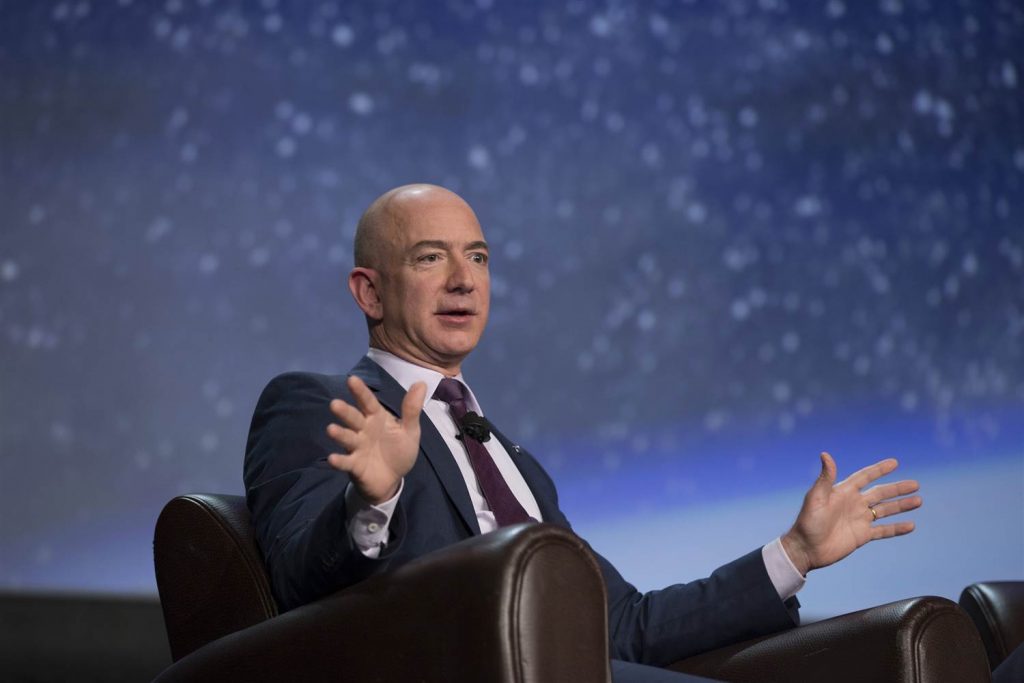 Amazon already accounts for about a quarter of all online sales in the United States. Now the company is holding talks to supersize its video-channel business, not just in the U.S. but around the globe.
Amazon already accounts for about a quarter of all online sales in the United States. Now the company is holding talks to supersize its video-channel business, not just in the U.S. but around the globe.
In the past few weeks, Amazon has started talks to buy scores of small television channels, several major program providers confirmed to NBC News. A representative for Amazon declined to comment, but hinted there will be much to say in the coming weeks about its efforts in online video.
Currently, subscribers to Amazon Prime get TV, movies and music, as well as free shipping on online purchases. They can also pay extra for premium channels such as HBO and Showtime, along with a host of niche-interest services on topics such as health or horror.
As traditional pay-TV providers scale down their offerings into cheaper so-called skinny bundles, Amazon is looking to scoop up smaller TV channels with minimal distribution in order to build itself into a video destination for every imaginable niche, with a particular focus on millennial audiences. Many networks have channels like these, including Turner Broadcasting’s Adult Swim and Boomerang, or Viacom’s VH1 and CMT.
“They are doubling down on the channels business,” said one industry programmer who asked not to be identified because they are involved in the talks. “They’re interested in doing deals with smaller indie networks where they can get rights to channels that are not handcuffed into [traditional distribution] bundles and they’re interested in offering them individually. Eventually they may bundle them together.”Jeff Bezos, chief executive officer of Amazon, speaking during the 32nd Space Symposium in Colorado Springs, Colorado on April 12, 2016. Matthew Staver / Bloomberg via Getty Images file
Customers can already buy scores of television services on Amazon, including Viacom’s Comedy Central Stand-up for $3.99, or Britbox, which offers British shows for $6.99. Amazon splits the revenue with channel owners.
Industry insiders say that Greg Hart, vice president of Amazon Video, is spearheading the current talks, aimed at creating a global platform for new online TV channels.
Tom Rogers, the former chief executive of TiVo and executive chairman of the sports app WinView, who is familiar with Amazon’s business, said Amazon may even want to offer the paid add-on channels as part of the Prime Video offering to boost their audience.
That possibility, he said, “could have more impact on the TV industry than any other development down the road.”
Analysts believe Prime has some 66 million subscribers, who pay $99 a year for the service.
Big tech companies are getting increasingly competitive in the online video market. Just last week, The Wall Street Journal reported that Facebook intends to spend $1 billion on content to increase its online video audience. In late August, reports revealed Apple had similarly earmarked $1 billion for content.
Amazon already spends around $4 billion a year to fuel its On-Demand subscription video offering. Its chief rival in that endeavor is Netflix, which spends more than $6 billion. But to put those numbers in context, Disney spent $12.4 billion on programming last year.
“It’s illustrative of the fact that Amazon, Apple and everyone who wants to be a player in video is going to spending very large numbers on rights,” said Brian Wieser, a senior analyst covering advertising at Pivotal Research in New York. The arms race for top-tier talent is intensifying, as is the demand for hits.
This month, Amazon’s global video chief, Roy Price, told Variety that the company’s chief executive, Jeff Bezos, wants him to find the next “Game of Thrones,” one of the biggest shows in HBO’s history. The series garnered 16.7 million viewers for its season finale last month.
Price told Variety that the company was ending its development of certain smaller series in pursuit of big-event TV.
Amazon has hired Robert Kirkman, one of the creators of AMC’s “The Walking Dead,” with the aim of bringing fans of the horror genre to the service. The show is one of the biggest entertainment series on TV.
Even with all the Academy Award buzz surrounding Amazon’s distribution of “Manchester by the Sea,” a multiple Oscar winner, the company has had some trouble replicating its critically acclaimed series “Transparent,” which began in 2014. Amazon has a few Oscar hopefuls being released later this year, including a new Woody Allen project called “Wonder Wheel,” out in December.
Of course, Netflix has been signing up big names, too, including ABC drama producer Shonda Rhimes, much to the chagrin of Disney.
“They want to find new things they can offer,” said Mark Mahaney, an internet sector analyst at RBC Capital, “because the more services you have, the more you engender loyalty and the more you can monetize the user base.”
Amazon isn’t first to the party in terms of offering online TV channels. Dish, the satellite service, has one called Sling, as does Sony PlayStation. Hulu (owned by Comcast — owner of NBCUniversal — Disney, 21st Century Fox and Time Warner) just launched a digital channel bundle, and AT&T’s DirecTV and Google’s YouTube also have rival packages. Their hope is to win audience data and sell digital advertising.
Each aim to challenge conventional pay-TV packages, which incidentally offer free-of-charge digital versions to subscribers of what they can get on TV.
While there are plenty of Silicon Valley pretenders to the video crown, Amazon is unique, largely because of its vast trove of purchasing data. Amazon could potentially track the ads viewed on its TV channels, and then link them to online purchases. Earlier this year, Amazon partnered with the drinks company Diageo to offer 20 minute “shoppable films.”
Amazon’s own advertising business is still relatively tiny, worth around $2 billion, according to estimates, but around 55 percent of product searches start on Amazon, according to a 2016 survey by Bloomreach, a software company.
Amazon, Apple, Google and Facebook like the idea of owning the online video experience of consumers — and stealing some of the $70 billion of ad revenue that is spent on TV annually.
It’s not clear that they can amass the same audiences as the TV networks, but Amazon’s attempts at building its audience are already evident. On Sept. 28, Amazon will begin its first major sports deal, streaming an NFL game — the Green Bay Packers versus the Chicago Bears — to its Prime subscribers. Amazon has a 10-game NFL package that it shares with other broadcasters, including NBC and CBS, having paid $50 million to steal away the digital football package from Twitter.
Amazon will also use its Alexa voice recognition machine to promote its football streaming, and in turn the NFL games will be used to promote its own online video shows.
























